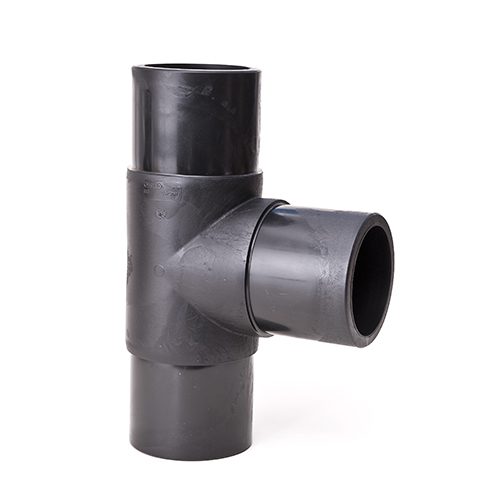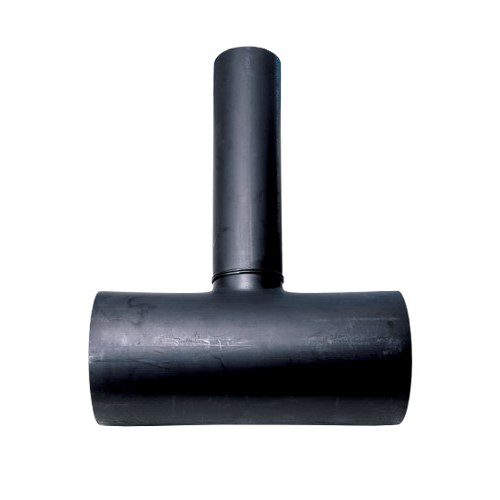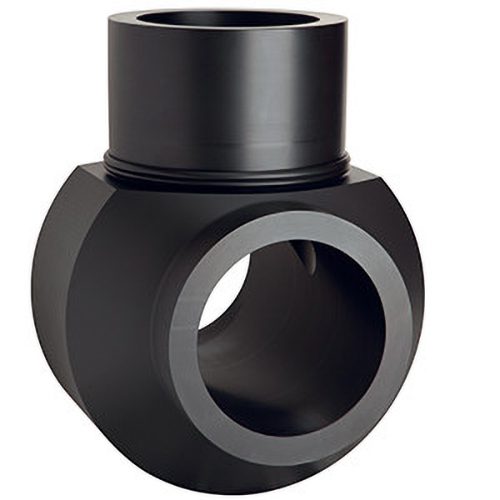How to choose the right tee for the job

Here at Advanced Piping Systems, we’re passionate about tees — both on the green, and in your HDPE piping system!
Whether you’re aiming for a hole in one or just want to be able to combine or divide a flow of fluids, success comes down to whether you can choose the right tee for the job.
While tees are one of the most common poly pipe fittings, with so many types available — moulded tees, fabricated tees, pulled tees, or machined tees — and so many different applications, it’s not always easy knowing which type you should be specifying.
That’s where we can help. At Advanced Piping Systems, we stock some of the world’s largest range of tees for HDPE pipe at our warehouse in Adelaide, South Australia, and our team is always happy to share their advice.
In this blog, Director of Advanced Piping Systems, Nathan Craig, breaks down the difference between the types of tees available, how to choose the right tee for your job, and the extensive range we have available and in stock.
Types of tees
Moulded tees

Advanced Piping Systems’ moulded equal tees and moulded reducing tees are fully pressure-rated to PN16.
With a reinforced and thickened section, these tees can handle all of nature’s forces, as well as expansion, contraction, and water hammer. They’re well-suited to abrasive environments, thanks to the moulded reinforcing.
Advanced Piping Systems stocks moulded tees ranging in size from 20mm, right through to a sizeable 630mm.
“Our 630mm SDR11 moulded equal tee is one huge chuck of moulded PE100 plastic and weighs in at 193.8 kg,” Nathan said.
“The injection moulding cycle on this product is more than three hours per fitting, so please do not accept a shortcut on your project!”
Fabricated tees

Advanced Piping Systems’ fabricated equal tees are derated by 50 per cent and can be used when pressure isn’t a primary concern for your pipe system.
“In projects with low-pressure, open-ended pipe systems, fabricated tees are adequate,” Nathan said.
“While they can be an alternative for moulded tees, they generally aren’t used below 450mm diameter, as moulded tees are more economical in this size, and are fully rated.”
In larger sizes where moulded fittings are not available and a higher-pressure class is required, Advanced Piping Systems can manufacture tees from PN20 or PN25 pipe, so that with the 50 per cent deration, achieve a PN10 or PN12.5.
With ergonomic dimensions, our fabricated tees allow for both the main line and branch to be set up in a Buttwelder, without needing extra short fittings, or clamps. This also means the tees can be welded into the mainline pipe strings.
Pulled tees (forged tees)

Depending on your pipe’s original diameter, pulled tees, often referred to as forged tees, can either be fully rated, or derated by 30 per cent.
They are an excellent, low-cost fitting, available in almost every diameter, from 200mm-1200mm. Depending on the off-take required, forged tees are often used in conjunction with a reducer for an economic, safe reduction in pipe sizes.
Because of the way forged tees are manufactured — by drawing a spigot from the parent pipe wall — they offer many benefits for installations.
These include:
- Being a much better solution to saddle fusion or socket fusion
- Providing a better flow and wear with materials like slurry and sewage thanks to smooth size transition, and with an internal radius
- Reducing outlets can be pulled up to 70 per cent of the main line pipe (for example, a 560mm spigot is the maximum size that can be drawn from an 800mm pipe)
- Forged tees with tee reductions up to 50 per cent of the main line pipe can be fully rated
- Coming in a fantastic size range, from 200mm up to 1200mm mainline with 800mm branch, or all the way down to 63mm; and
- They offer a greater flexibility and choice when it comes to wall thickness, including SDR21, SDR17, SDR13.6, SDR11, SDR9 and SDR 7.4.
Machined tees

Machined tees are fully rated, and are exactly what they sound like — machined out of a block or billet of HDPE, to almost any diameter and configuration.
“Machined tees are generally only really used when moulded tees aren’t available.
“They can potentially fill any gaps that exist in the moulded range, as well as when you require a fully pressure rated tee larger than what is stocked in the moulded range.
“They’re a more expensive option but are considered the ‘Rolls Royce’ of customised fittings,” Nathan said.
How to choose the right tee for the job
When it comes to choosing the right tee for your job, there are a few things you should consider:
- The application for pressure and the media you’re working with (for example, gas, slurry, or wastewater)
- Industry preference; and
- How long you need the tee to last.
It’s important to note that some processes just use poly as fluming, so pressure rating isn’t always an important factor.
If you don’t select the right tee, your pipe system’s performance will be unable to function at its optimum level, Nathan explained.
“If you don’t install the right tee, it will not perform, or last as long as required.
“For example, on a mine site producing slurry, if you don’t use the correct tee, the pipe could burst, and the flow might not be fast enough.
“An underrated tee will not wear as required or could burst at a lower pressure than required working pressure, or it might just hold out, but then one day, just let go.”
At Advanced Piping Systems, we recommend referring to the PIPA Industry Guidelines, ‘PE Fabricated Fittings for Pressure Applications: Derating Requirements’ when selecting a tee for your HDPE pipe system.
“PIPA’s Industry Guidelines are a compilation of industry best practice,” Nathan said.
“They’re able to suggest pressure de-ratings for segmented fittings and are an excellent guide to ensure that what you install is adequate for its application.”
But remember, if you’re ever in doubt, speak to an expert.
“Not all products are the same, and each fabrication is different, so speak to an expert to find out the best tee for your requirements.”
Advanced Piping Systems’ range of tees
At Advanced Piping Systems, we proudly stock the world’s largest range of moulded tees and can manufacture and fabricate many other types to suit your needs.
“Unfortunately, unlike pumps and valves, tees often have long lead times — and Europe is a very long way away when one is required,” Nathan said.
“So we make sure we have a good number of tees in stock at any given time.
“We can also manufacture and fabricate segmented fittings, including moulded equal tees up to 1200mm and forged tees up to 1200x630mm.
“If you require a machined tee, we have the machining capacity to turn PE100 solid billet into fully rated equal and reducing tees to ensure your pressure rating or nominal bore isn’t compromised.”
If you’d like to learn more about our range of tees or need help choosing the right tee for your job, contact us today (or find one of our team teeing off at your local golf course!)

